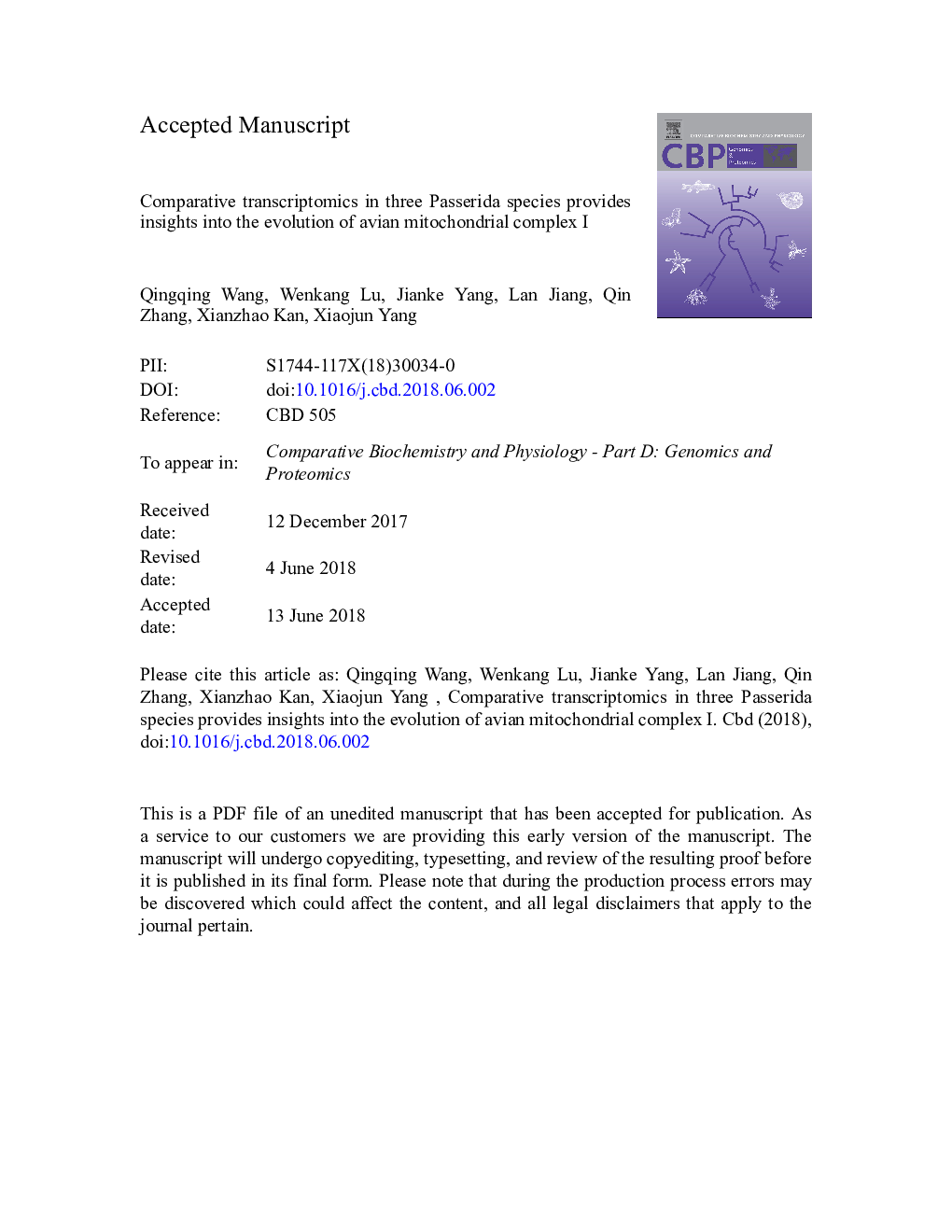| Article ID | Journal | Published Year | Pages | File Type |
|---|---|---|---|---|
| 8319228 | Comparative Biochemistry and Physiology Part D: Genomics and Proteomics | 2018 | 34 Pages |
Abstract
Recent studies have shown that mitochondria play a crucial role in cellular energy production through the oxidative phosphorylation (OXPHOS) system. Complex I (NADH:ubiquinone oxidoreductase), the first and largest enzyme complex of the OXPHOS system, includes both nuclear- and mitochondrial-encoded proteins. However, the patterns of natural selection and phylogenetic implications of complex I in birds still remain unclear. In this study, we combined transcriptomic and phylogenetic analyses to comprehensively determine the evolution of avian complex I. The transcriptomes of three Passerida species (Leiothrix lutea, Spodiopsar sericeus, and Passer montanus) were obtained using the Illumina HiSeq⢠2500 system. More than 192,000,000 clean reads were assembled in a total of 828,267 transcripts. Evolutionary selection analysis suggested that six genes of the core subunits in avian complex I may have undergone putative positive selection. Notably, we found that the mean dN/dS (Ï) ratio for mitochondrial genes of core subunits was significantly lower than that for nuclear genes of non-core subunits within complex I. The constructed maximum-parsimony, maximum-likelihood, and Bayesian inference phylogenetic trees were based on 44 complex I genes. We verified that the family Paridae (represented by Parus major and Pseudopodoces humilis) was clustered with Musicicapoidea. Our results provide new insights into the evolution of avian mitochondrial complex I.
Related Topics
Life Sciences
Biochemistry, Genetics and Molecular Biology
Biochemistry
Authors
Qingqing Wang, Wenkang Lu, Jianke Yang, Lan Jiang, Qin Zhang, Xianzhao Kan, Xiaojun Yang,
